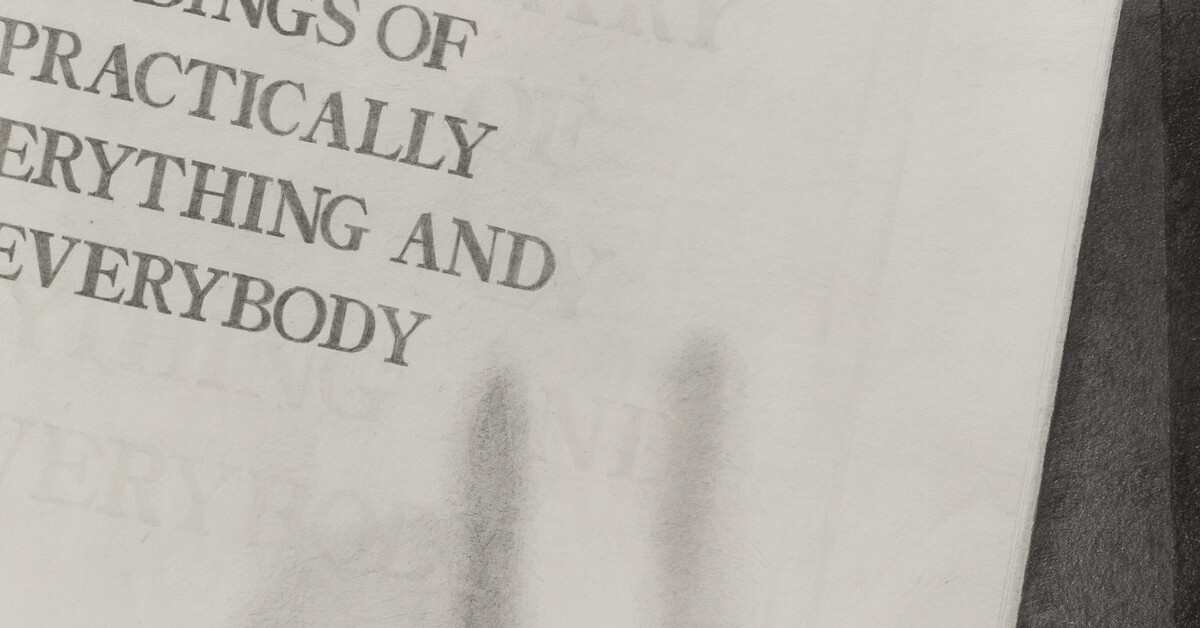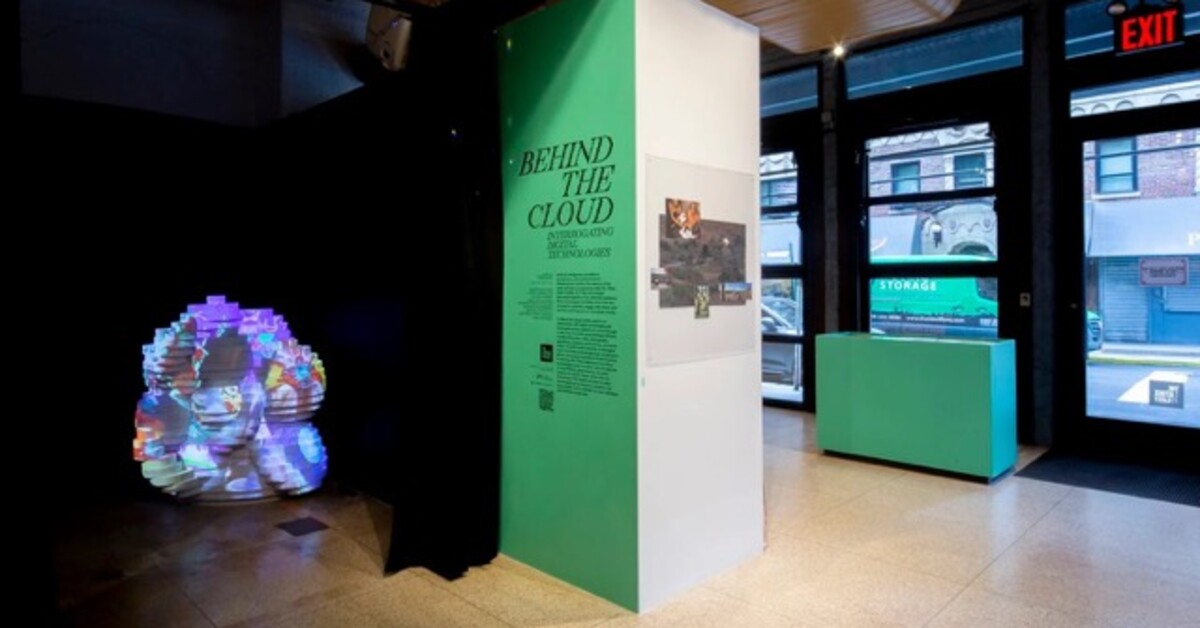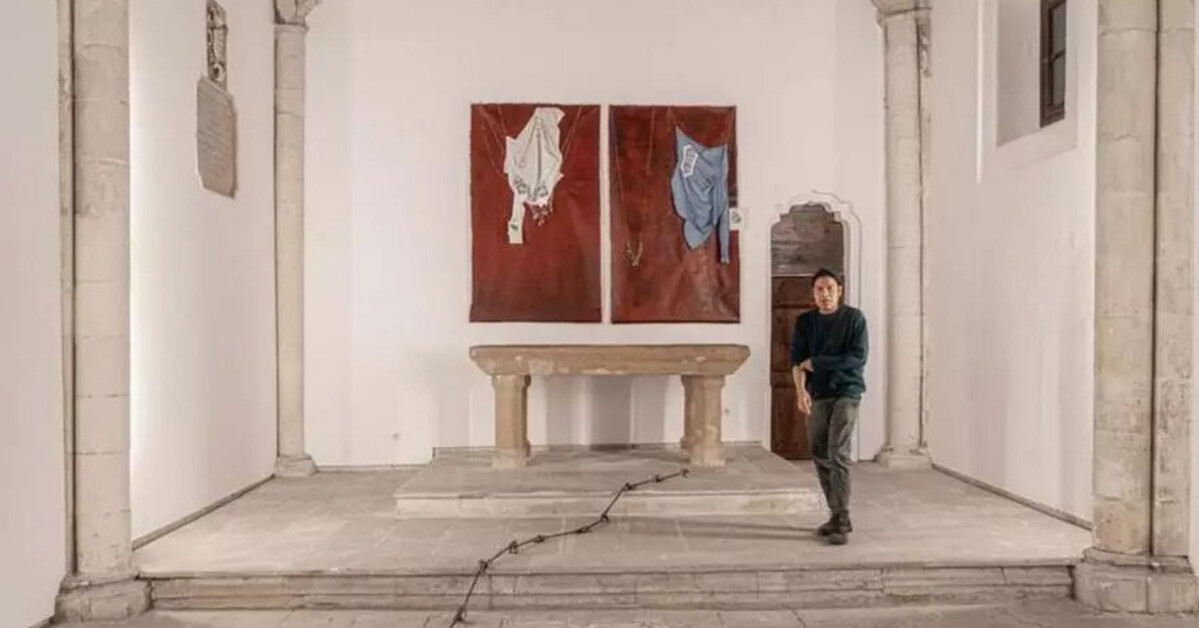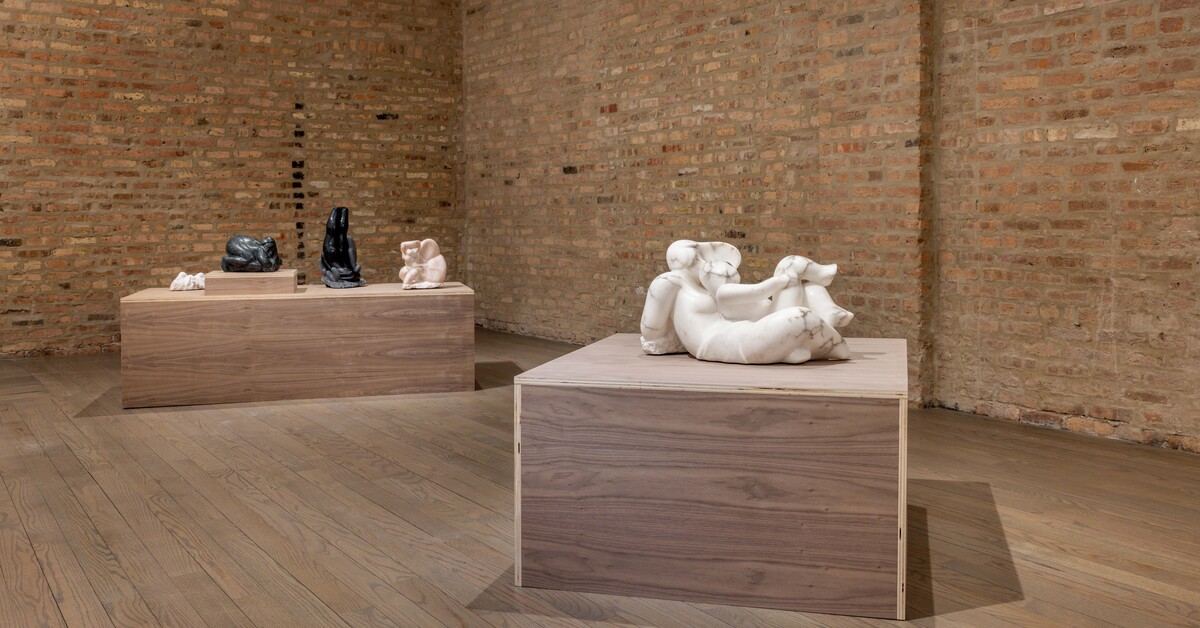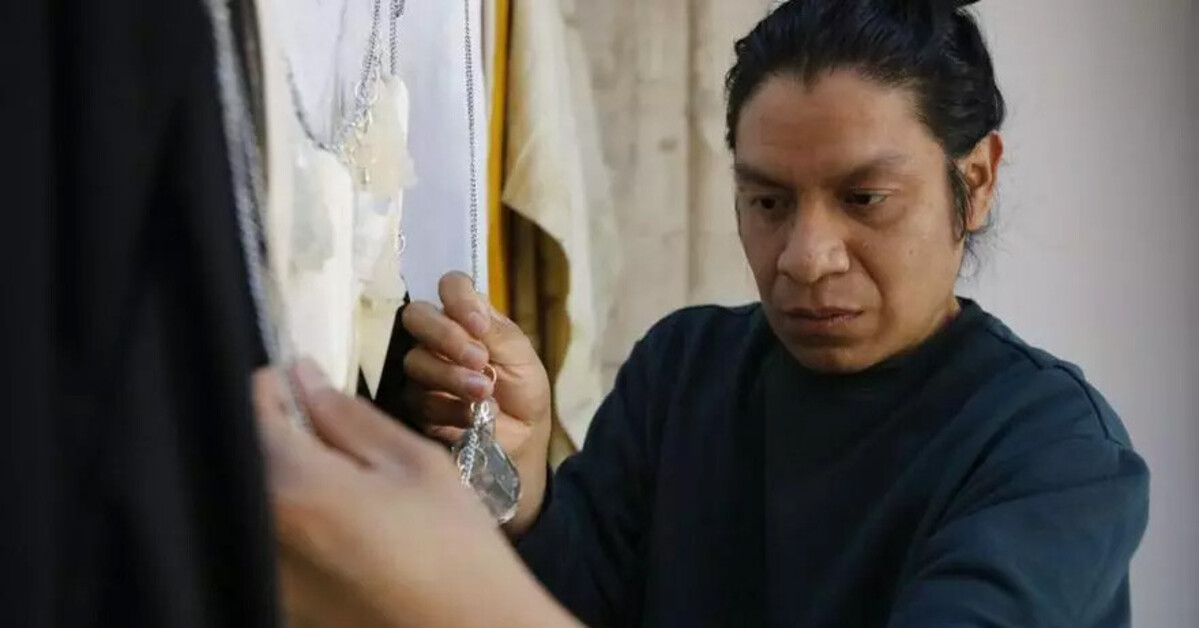The Best Shows to See in Chicago Right Now
Frieze / Apr 13, 2023 / by Lisa Yin Zhang / Go to Original

‘The Chicago Cli-fi Library’, 2023, installation view. Courtesy: the artist
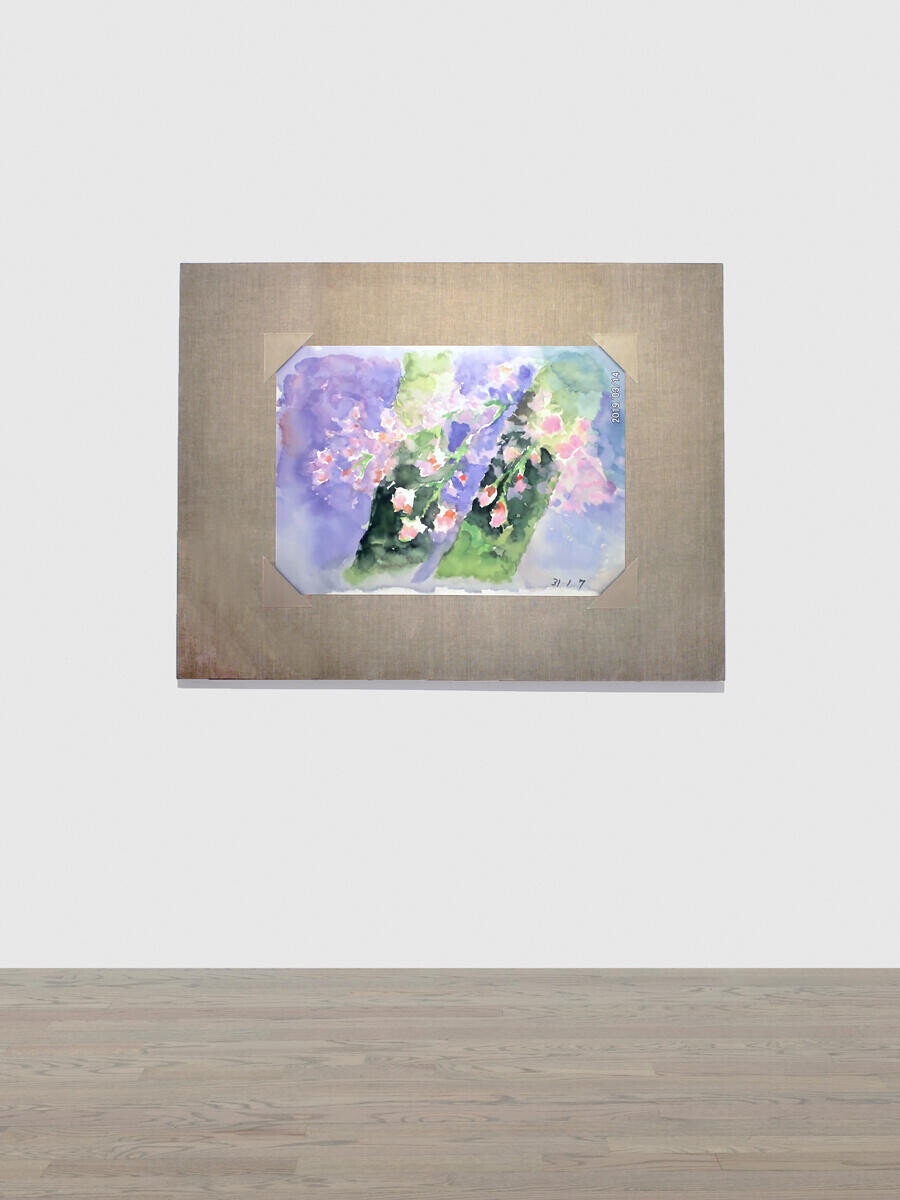
Mika Horibuchi, Watercolor of Weeping Cherry Branches, 2023, oil on linen, 107 × 140 × 4 cm. Courtesy: the artist and PATRON Gallery Chicago
Mika Horibuchi
Patron Gallery
12 April – 27 May
Chicago-based artist Mika Horibuchi presents new painting and installations that are more than meet the eye. A series of oil paintings – entitled, for reasons which will become clear, ‘Watercolors’ – are the result of an unusual collaboration between the artist and her grandmother. At the age of 83, Horibuchi’s grandmother began taking watercolour classes at a local community centre in order to better understand her granddaughter and her work. The two exchanged regular letters, with which the older Horibuchi enclosed snapshots of her watercolours – images which her granddaughter reproduced in oil. In Watercolor of Weeping Cherry Branches (2023), for instance, the titular blossoms have the diluted effect of pigment drenched in water, but the crisp date imprinted by the digital camera is rendered with precision. Horibuchi goes so far as to include the pockets in which the ‘watercolour’ is tucked, as well as the linen-like background against which the photographs were set. This aesthetic sampling extends beyond the making of the works themselves – in the gallery, certain works are hung to mimic a presentation in a community centre. With wit and love, the younger Horibuchi explores how images are transformed through the act of reproduction, her work both affirming and diminishing the distance between the artist and her grandmother.
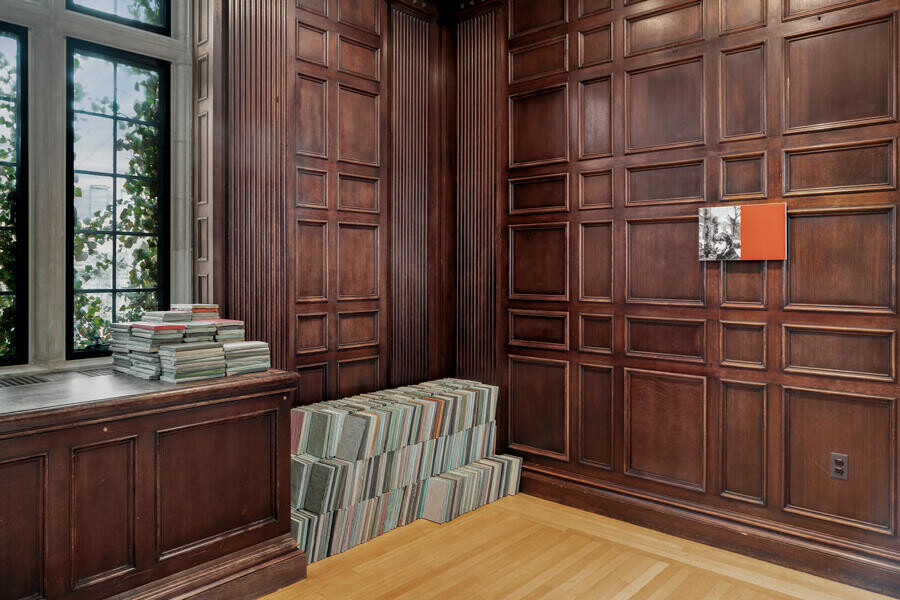
‘The Chicago Cli-Fi Library’, 2023, installation view. Courtesy: the artists
‘The Chicago Cli-Fi Library’
Neubauer Collegium
22 February – 11 June
‘The spectre of climate change,’ the press release ominously intones, ‘has yet to produce the Anthropocene’s defining masterpieces.’ How should one make art to answer a problem of such scale? Curator Dieter Roelstraete suggests that the only possible responses will be ad-hoc, hyperlocal and piecemeal. Well, when in Chicago. Artists Jenny Kendler, Iñigo Manglano-Ovalle and Dan Peterman and duo Beate Geissler and Oliver Sann – all with practices based here – rise to that impossible challenge. Geissler and Sann’s How Does the World End (for Others)?, Horseshoe Crab (2023) depicts the titular creature on its shelled back, rearing hopelessly with insect-like legs. Set against the grandeur of the Collegium’s wood-panelled walls, across the way from a tufted leather sofa, I was reminded of the sad protagonist of Franz Kafka’s The Metamorphosis (1915), who wakes up one morning mysteriously transformed into a cockroach and remains beset, despite his transformation, with the banal details of a life of pure subsistence. Peterman invokes the library in which the exhibition takes place: Archive (One Ton) (2012), a set of concrete slabs that look, from a distance, like stacked books, slot into one corner of the space and across the exhibition venue. Some stand on cinderblock shelves outside the building: so much accumulated effort, knowledge and artistry, fossilized as if at the end of the world.
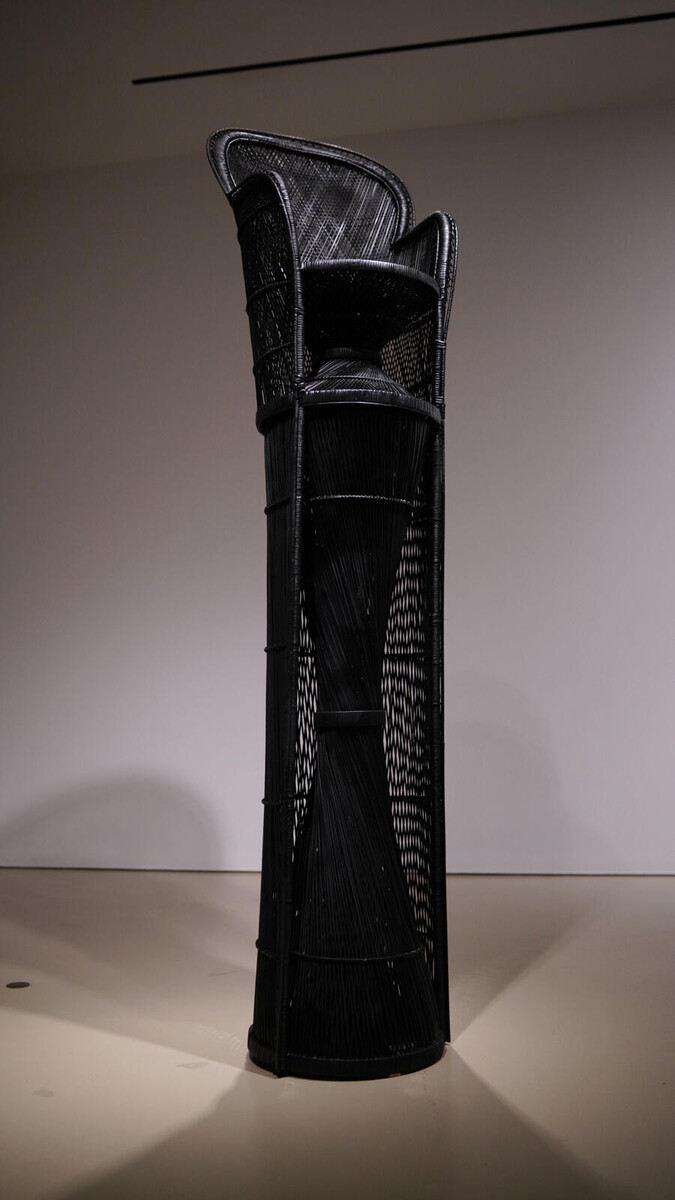
Esmaa Mohamoud, A Seat Above the Table (Warren Moon), 2019 , found rattan peacock chair, rattan, paint, tape, plastic, adhesive, nails , 290 × 66 × 66 cm. Courtesy: the artist
Esmaa Mohamoud
Allana Clarke
Kavi Gupta
Opening 14 April
Neither of the two solo exhibitions currently showing at Kavi Gupta should be missed. Through her mixed-media sculptural works, Esmaa Mohamoud examines what she dubs ‘Black body politics’, or the interrelated personal, socio-economic and historical factors that shape the category of Blackness from both within and outside the identity. A Seat Above the Table (Angela Bassett) (2019), a 12-foot tall rattan chair, references both the titular actress and the Black Panther Huey P. Newton, who was photographed in such a seat. The work escapes the easy connotations of a domestic American symbolic vocabulary, however: the original peacock chairs were woven by prisoners in the colonized Philippines.
Allana Clarke, meanwhile, continues her signature usage of Salon Pro 30 Sec. Super Hair Bond Glue, a product used to attach hair extensions or wigs to the scalp. To make the works on view, Clarke empties thousands of bottles of the glue over mesh, then manipulates the gradually-hardening material into sculptural shapes, as if wrestling with congealed ideas of Blackness. In I Feel Everything (2023), the material has been pulled to more than six feet across; rippling, bunched, black, glossy and almost delectable, it is offset with ragged edges and gaping holes.
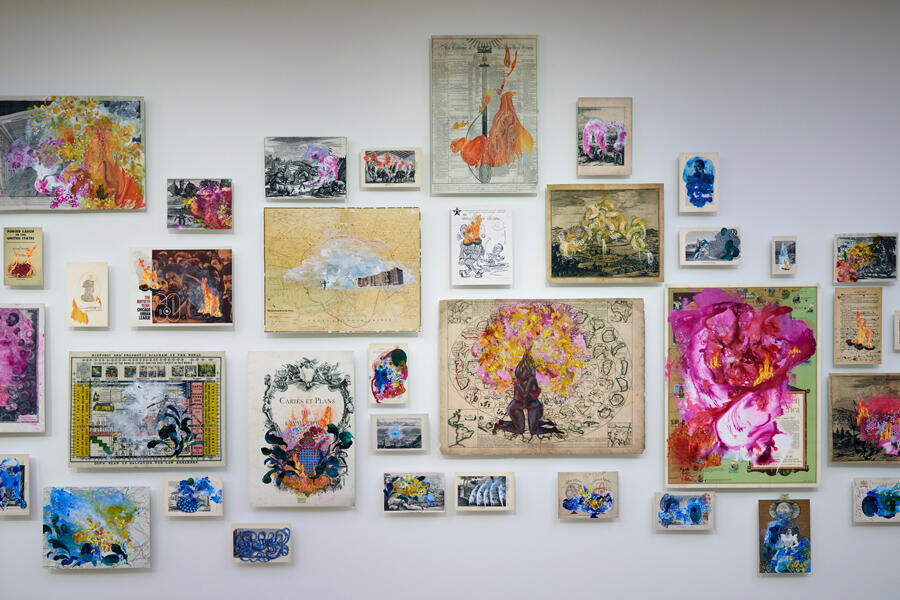
Firelei Báez, the soft afternoon air as you hold us all in a single death (To breathe full and Free: a declaration, a re-visioning, a correction), 2021, acryl-gouache and chine collé on archival printed paper, dimensions variable. Courtesy: the artist and James Cohan Gallery; photograph: Dan Bradica
‘Forecast Form: Art in the Caribbean Diaspora, 1990s–Today’
The Museum of Contemporary Art Chicago
19 November 2022 – 23 April 2023
Don’t miss the last days of ‘Forecast Form: Art in the Caribbean Diaspora, 1990s–Today’, a group exhibition of 37 artists. Here, the ‘Caribbean’ is conceptualized not as place, but by movement: of people, voluntarily and forced; of capital, of weather systems. In Teresita Fernández’s Rising (Lynched Land) (2020), for instance, a palm tree – a plant not indigenous to the Caribbean, despite its close associations with its tropical locale – is painfully bound and suspended from the ceiling, invoking the violence associated with colonialism and environmental plunder. Firelei Báez contributes more than 80 individual works that together make up the soft afternoon air as you hold us all in a single death (To breathe full and Free: a declaration, a re-visioning, a correction) (2021). Telling the story of queen of Haiti Marie-Louise Coidavid, who was exiled to Pisa, Italy, in 1831, the work reads an individual displacement in context with other Black diasporic histories and tales of folklore, pulling in images of plants, maps and figures from Dominican and Nigerian mythology.
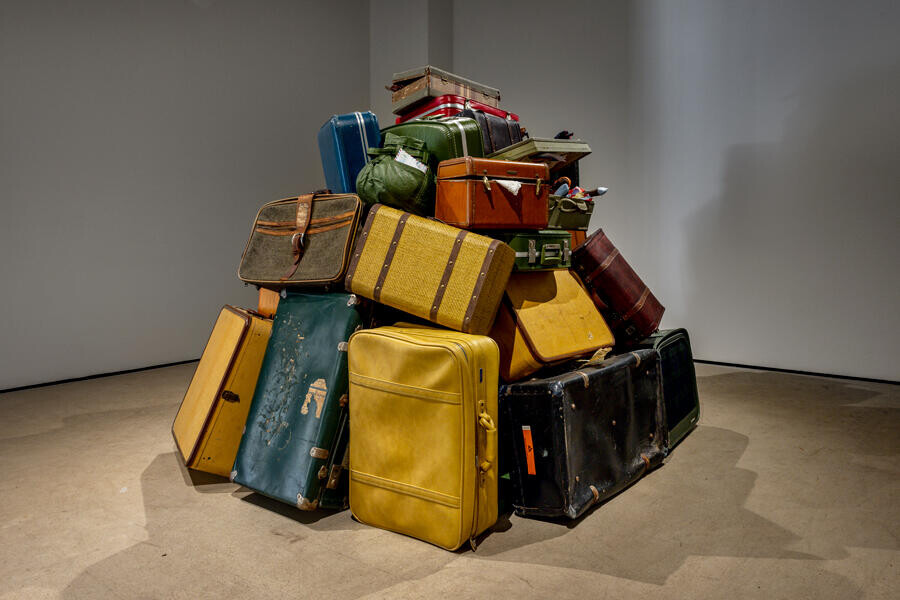
Patrick Eugène, ‘50 lbs.’, 2023, installation view. Courtesy: the artist and Mariane Ibrahim
Patrick Eugène
Mariane Ibrahim
13 April – 20 May
Haitian American painter Patrick Eugène presents a suite of paintings and two installations in his first solo exhibition with Mariane Ibrahim. Mementos held in a vitrine hint at the themes of the exhibition. Photographs – clearly taken at different points across a long history – surround a central orange dress like a shrine. The paintings on view are portraits, but are not necessarily drawn from likeness to real figures; Eugène pulls not only from the personal experience of himself and his family, but also from a feeling of solidarity and connection with his ancestors and a pan-African identity. The exhibition’s title, ‘50 lbs.’, references the weight restrictions applied to airline luggage, and the burdens of individual and collective displacement. In The Meaning of Home (2023), for instance, a woman with bright yellow lapels and a single brilliant pearl earring gazes off to her right, her wrist bent under the weight of a suitcase. The subject of Antre (2023) mirrors her posture: against a rural backdrop, he stands in contrapposto, gazing off at some unseen person, landscape or memory. Eugène visualizes the weight of such ruminations in a moving installation given its own room. Vintage suitcases, like the items in the vitrine and each portrait on view, clearly belong not only to different individuals but different eras: stacked haphazardly atop each other, one spills out books and belongings, as if its owner had but a minute to pack.

